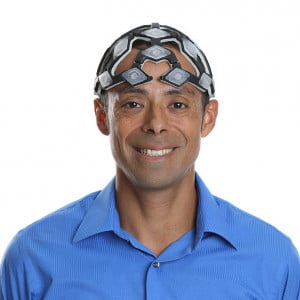WAVi Performance Brain Scans
WAVi Performance Brain Scan
Are you curious about how well your brain is performing?
Maybe you already use a Fitbit/Oura Band/ Whoop/Apple Watch to see how well you’ve slept, how much you’ve moved, how good your recovery is. We all certainly take standard health measurements like weight, blood pressure, and cholesterol to give us an idea of how our health is.
A WAVi Performance Brain Scan is an affordable brain scan that allows you to track your results over time and to track changes through injuries, aging, lifestyle, and behavioral impacts.

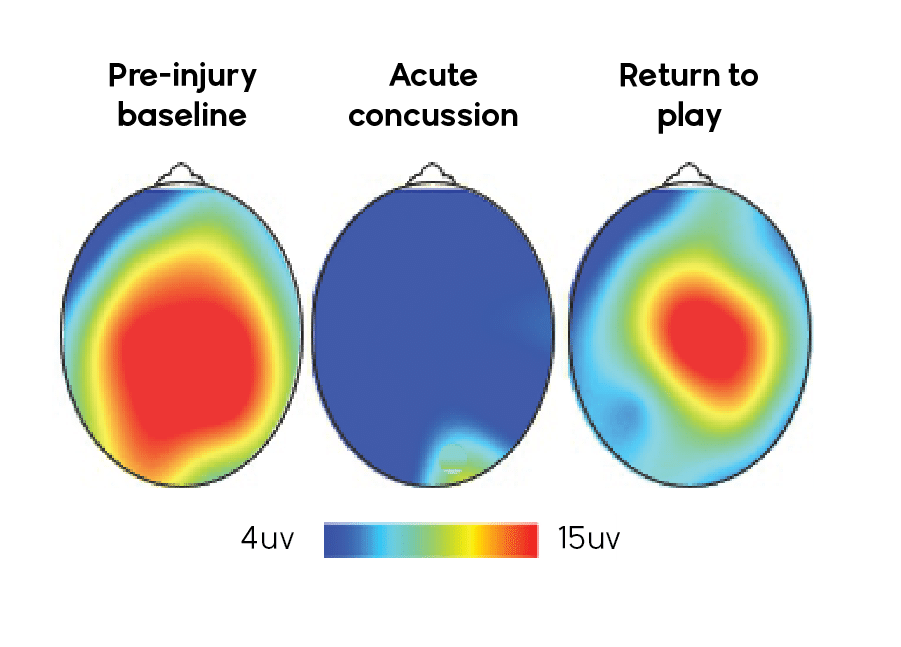
Why track your brain performance?
When we invest time, energy, and money in our health and wellness, we like to know that we are actually benefiting. And while we are huge advocates for keeping your own health journals, staying in tune with your body, and recognizing your bodies’ own cues, were are also big fans of health tracking DATA.
The WAVi performance brain scan is the perfect addition to any wellness routine or packages including all of our services at the Bay Area Brain Spa. If you start with a brain scan before you begin your biohacking treatments you can measure the affects they have had on your brain performance.
Who Should Have a WAVI Performance Brain Scan?
Anyone interested in their brain performance!
- Anyone interested in tracking how biohacking (like neurofeedback!), exercise, nutrition, and lifestyle improvements can change your performance metrics over time.
- Anyone participating in high-risk sports (football, soccer, mountain biking, lacrosse, rugby, baseball, etc.)
- Anyone wanting to have a baseline of their brains performance so they can track it over time.
- History of traumatic brain injury or post-concussion
- History of cancer chemotherapy
- Struggling with insomnia
- Curious about your attention/focus/ADHD
- Tracking chronic neurological conditions such as Multiple Sclerosis or Parkinson’s Disease
- Worried about cognitive decline
What Does the WAVi Performance Brain Scan Tell You?
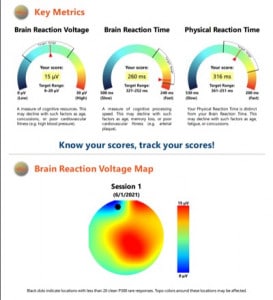
Brain Reaction Time:
This measure of cognitive processing speed is influenced by both your inherent traits and your current physiological state (which is actionable). Your brain’s reaction time are sensitive to chronic issues such as cardiovascular health, diet, life-sytle habits, exercise and age.
Brain Reaction Voltage:
This is a measure of cognitive resources devoted to processing a task. It is sensitive to many variables affecting the brain. Think of improvements in this area as increasing your brain’s horsepower.
Physical Reaction Time:
This is a measure of how quickly your brain processes and reacts to stimuli. This can be trained and improved through many different approaches.
Voltage Map:
Voltage Maps display a birds-eye-view of where the brain is creating the most energy. Warmer colors indicate stronger voltage. Voltage maps will change as a result of neurological trauma, age, treatment and lifestyle changes.
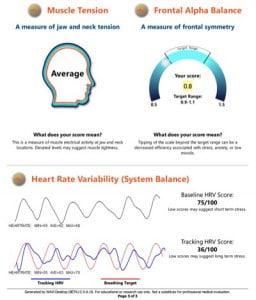
Muscle Tension:
Elevated levels of certain electrical signals on the EEG can be a sign of excessive muscle tension in the neck and jaw.
Frontal Balance:
This represents the brain symmetry of your frontal lobes where emotions are generally processed. Asymmetry in this brain region has been correlated with low mood, anxiety and depression.
Heart Rate Variability:
Heart Rate Variability (HRV) provides an assessment of autonomic nervous system function, and can be used as an indirect measurement of stress. Stress can result in sympathetic nervous system dominance, which elevates heart rate and decreases HRV as the brain tries to control the heart. Greater HRV is generally indicative of better health, younger age, less stress and better aerobic fitness.
What to expect from a WAVi Performance Brain Scan Appointment

Required Tools:
Steps to conduct the brain scan:
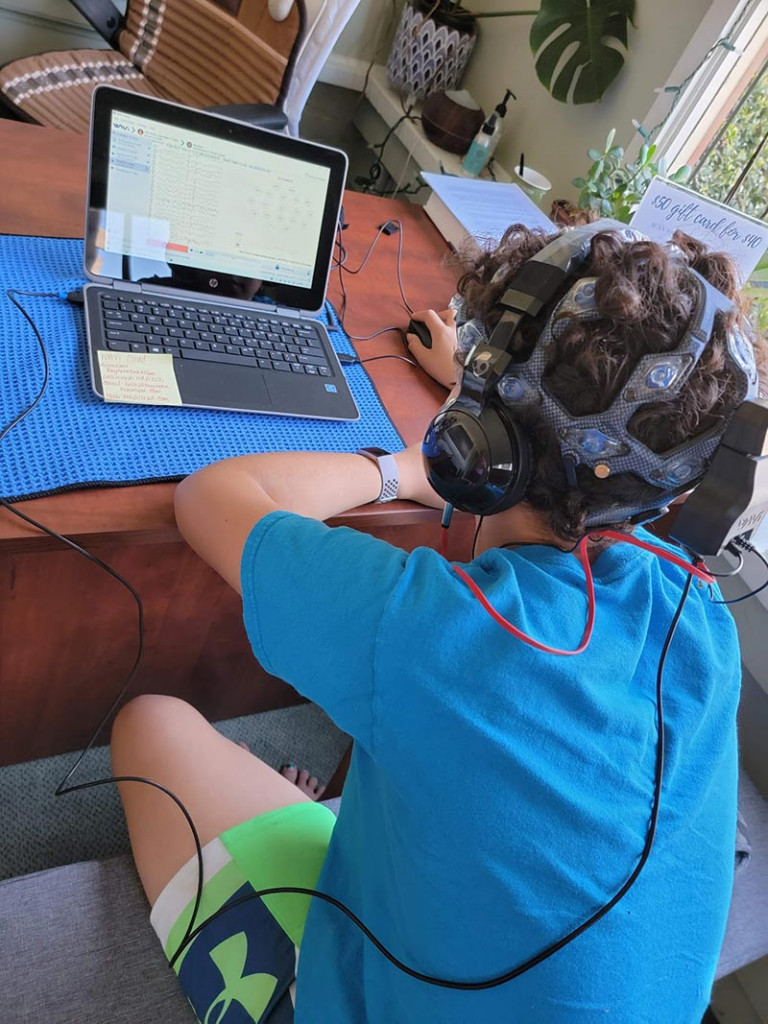
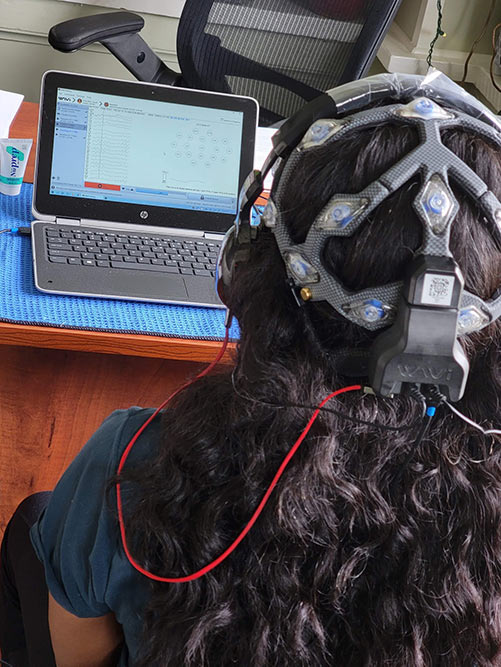
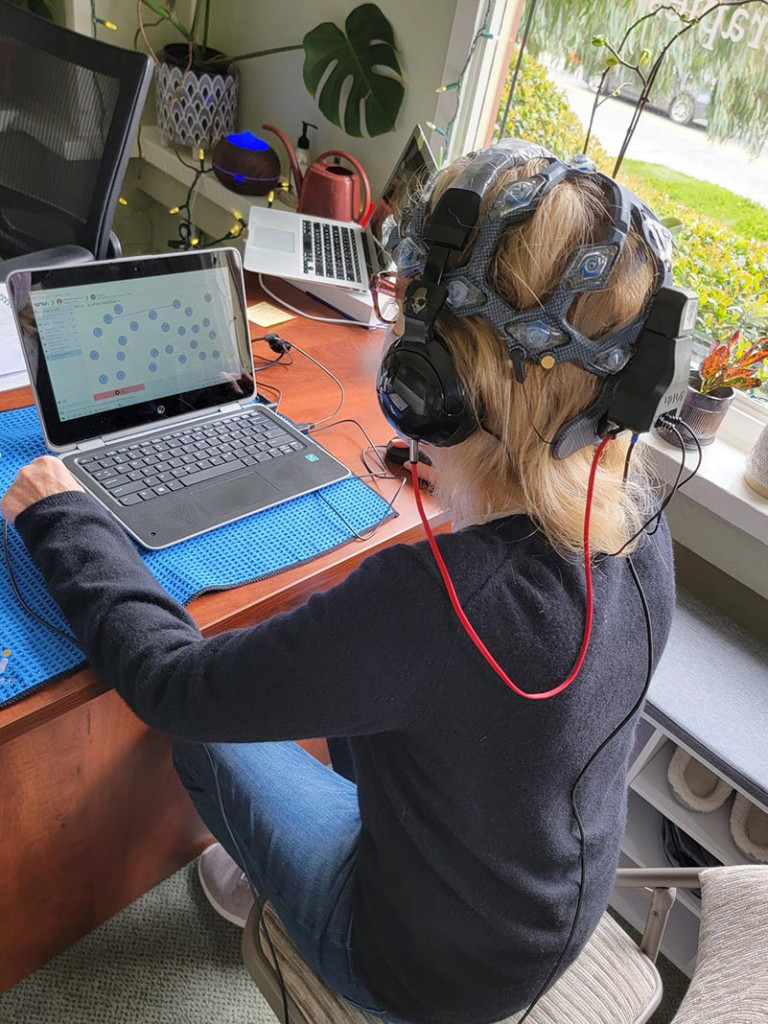
-
WAVi Brain Scan $200
Track your brain performance.
-
Pre and Post Scans $300
Save when you buy 2 scans. Start with one as a baseline to see how you are now and use your second within 6 months to track your progress.
-
Group Brain Scans for Sports Teams
Would you like pre-season scans for your whole team? Contact us for bulk pricing.
-
Treatment Tracking for Professionals
We can perform scans for doctors, acupuncturists, chiropractors and other wellness professionals who want to track their patients progress. Contact us to learn more.
Want to book a WAVi Scan? Just text us! 510-338-4645
WAVi FAQs
WAVi takes complicated brain information and makes it accessible; distilling it into actionable insights and understandable metrics.
WAVi uses EEG technology that records an electrical signature of the brain and P300 ERP tests that measure the brain’s reaction to a stimulus such as a sound or an image. ERP tests yield high-resolution measures of brain speed (down to the millisecond).
ERPs used by WAVi are well-established metrics and have been involved in numerous clinical research studies over the last several decades; having been shown to be informative biomedical markers relating to a wide range of brain states and traits.
Similar to routine measures such as blood pressure or heart rate the WAVi test provides objective information about how your body and brain are performing.
This test includes measures of brain speed, brain wave power, and reaction time. Understanding these measurements and tracking them over time can help answer questions such as:
-How is my brain changing as I age?
-How can I improve my brain performance?
-What, if any, impact are treatments and interventions having on my brain?
-How do my brain metrics relate to my mental health?
Tracking your brain performance means taking care of your brain. Establishing the baseline of what your brain performance looks like now is an important first step.
Like all organs in your body, your brain changes over time and it’s best to track these changes regularly and objectively. Regular tracking enables you and your practitioner to better manage potential cognitive decline, traumatic events, unexpected health circumstances and lifestyle changes. You can then benefit from personalized treatment programs and improved care.
Yes! Headquartered out of Nobel Laureate Tom Cech's Biofrontiers Institute at the University of Colorado, WAVi Research has created and analyzed data sets that include pre-symptom Alzheimer's, a 6-year longitudinal concussion study on NCAA athletes, studies on hearing loss and mental function, correlations between heart and brain health, and the effects of interventions on brain performance, including the effects of ADHD medication. Recently, WAVi has been awarded an NIH grant to study acute pain and opioid abuse. WAVi also helps promote its clinicians through open research collaborations made available by the WAVi cloud application.
No. The Wavi is a performance brain scan, it is used to evaluate how well your brain is performing. We will be able to use it to track progress with reaction time, HRV and other markers.
No. This device is only measuring brain activity.
No. There are some sensors that have been soaked in a saline solution that will be placed in the EEG helmet and set on your head. They will feel a little damp. There could be a little pressure on the head depending on the size of the helmet. We will use a tool to gently divide your hair to make sure we have a good connection with the sensors.
Come in with your hair down.
Remove earrings
Get a good night’s rest.
More Learning Resources
- WAVi website
- How Measuring Brain Function Leads to Performance Upgrades – David Oakley, Ph.D., with Dave Asprey – #867
- In an exclusive report, NextTribe.com writer Jeannie Ralston tries out new technology that promises to detect possible dementia while there’s still time to take preventive steps.
- New brain scan technology hopes to help troops with PTSD
- Your Brain Voltage: Measure It, Raise It, Control It – Paul Sorbo #619
- Episode #17: How To Measure Brain Health With David Oakley Of WAVi

